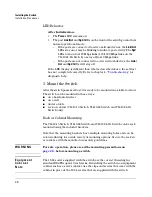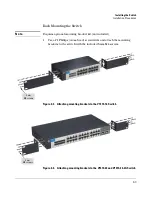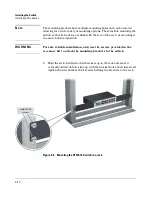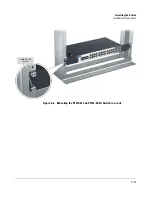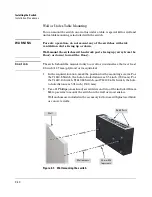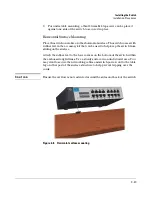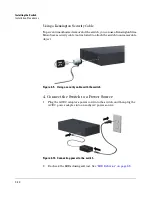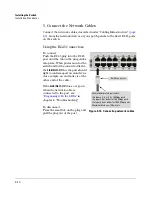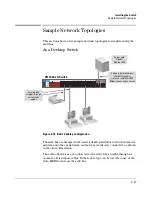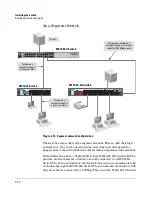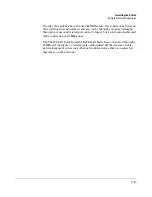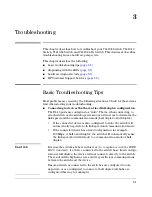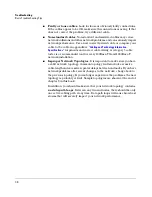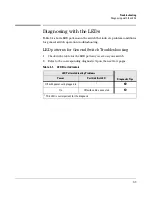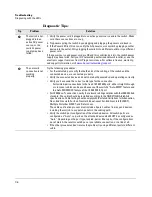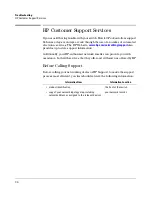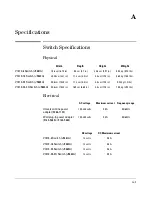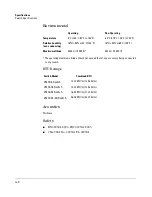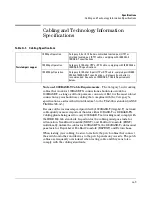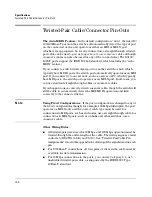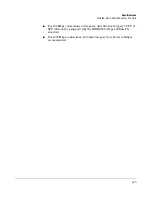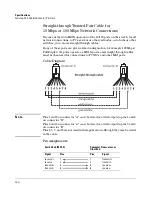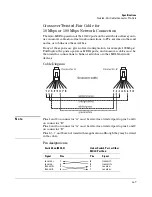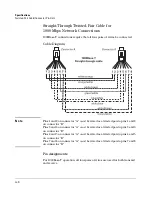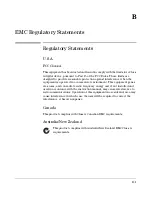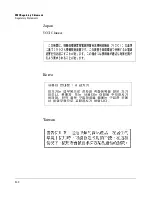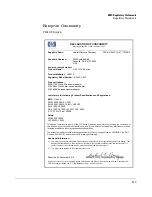
3-2
Troubleshooting
Basic Troubleshooting Tips
■
Faulty or loose cables.
Look for loose or obviously faulty connections.
If the cables appear to be OK, make sure the connections are snug. If that
does not correct the problem, try a different cable.
■
Non-standard cables.
Non-standard and miswired cables may cause
network collisions and other network problems, and can seriously impair
network performance. Use a new correctly-wired cable or compare your
cable to the cable in appendix A,
“Cabling and Technology Information
Specifications”
for pinouts and correct cable wiring. A category 5 cable
tester is a recommended tool for every 100Base-TX and 1000Base-T
network installation.
■
Improper Network Topologies.
It is important to make sure you have
a valid network topology. Common topology faults include excessive
cable length and excessive repeater delays between end nodes. If you have
network problems after recent changes to the network, change back to
the previous topology. If you no longer experience the problems, the new
topology is probably at fault. Sample topologies are shown at the end of
chapter 2 in this book.
In addition, you should make sure that your network topology contains
no data path loops
. Between any two end nodes, there should be only
one active cabling path at any time. Data path loops will cause broadcast
storms that will severely impact your network performance.
Содержание J9661A
Страница 2: ......
Страница 3: ...HP V1410 Switch Series Installation and Getting Started Guide ...
Страница 7: ...v Contents Australia New Zealand B 1 Japan B 2 Korea B 2 Taiwan B 2 European Community B 3 Index ...
Страница 8: ...vi Contents ...
Страница 34: ...2 20 Installing the Switch Sample Network Topologies ...
Страница 50: ...B 2 EMC Regulatory Statements Regulatory Statements Japan VCCI Class A Korea Taiwan ...
Страница 58: ...4 Index ...

